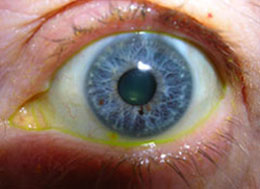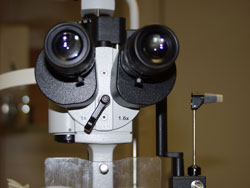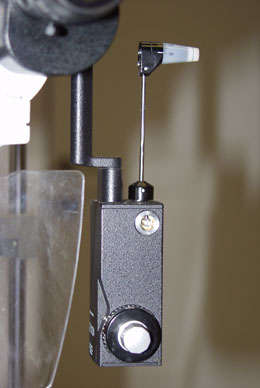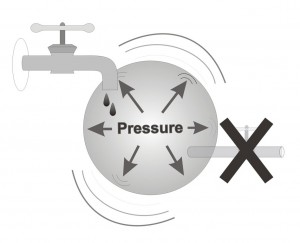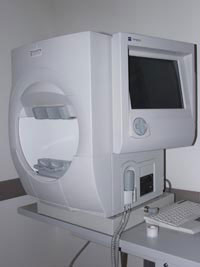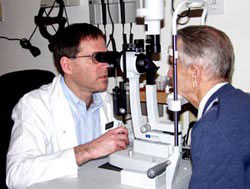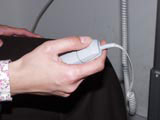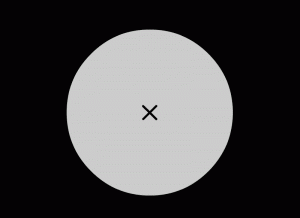What is Intraocular pressure? Why is it so important in diagnosing and following glaucoma patients? How do we accurately measure it in the clinic?
Intra-ocular pressure is the most important parameter for treating and stabilizing glaucoma. The intraocular pressure (the pressure built-up within the eye) is an indication of how full the eye is with fluid, which in turn affects the tension on the wall of the eye. This is fluid which is normally secreted and absorbed within the eye, however not necessarily at the same rate. The intra-ocular pressure may be compared to the pressure in a bicycle tire or a soccer ball. As the eye fills with fluid, the tension on the wall of the eye increases, making the wall of the eye harder, thus and creating greater tension on the nerve tissue within the eye. Both high intraocular pressure as well as very, very, low pressures is not healthy for the eye, when present for long periods of time (months to years). Low intra-ocular pressure results in decreased clarity of vision and harm to the retina (but such low pressures are only very rarely encountered), while high intra-ocular pressure, which is a relatively common finding, will cause slow but constant damage to the optic nerve and will consequently lead to the development of glaucoma.
In conclusion, eye pressure may be normal, too high or too low. Abnormally high intra-ocular pressure increases the risk of slow irreversible damage to the optic nerve, and eventual damage to the visual field . The aim of treatment in glaucoma is to lower the intraocular pressure to normal or even slightly lower then normal values, enabling the optic nerve to function properly and remain healthy for many, many, years.
Why is it important to measure intraocular pressure?
Balancing the intraocular pressure is the most important way to stabilize glaucoma. The damage caused by glaucoma occurs when the intraocular pressure is too high. Therefore, the ophthalmologist measures the intraocular pressure in both eyes of the glaucoma patient, insuring that the pressure is indeed normal. In cases in which the intraocular pressure is elevated or the disease has progressed (such as evident by deterioration of the visual field) more aggressive medical treatment, laser treatment or even surgery may be needed, to try and prevent further irreversible damage.
How is the intra-ocular pressure measured?
In order to measure the intraocular pressure a drop of a yellow colored analgetic eye drop is applied to each eye, rendering the external part of the eye temporarily numb. A special isntrument for measuring intra-ocular pressure (called a “tonometer”) is then brought towards the eye in order to take the actual measurement. The intraocular pressure measurement is evaluated in units of pressure (millimeters of mercury, or ‘mmHg’). The normal range of pressures for healthy eyes runs between 10 and 21 mmHg. The intraocular pressure fluctuates a lot during the day, between day and night, and on different days, months and seasons of the year. Hence, it sill most certainly not be exactly the same each time it is measured.
